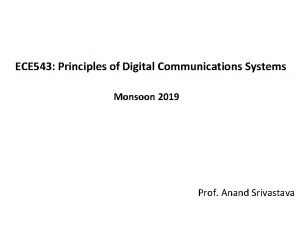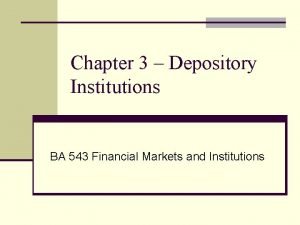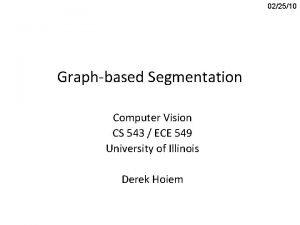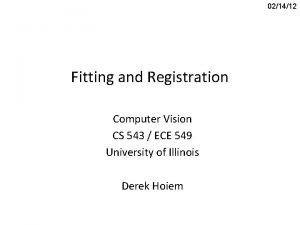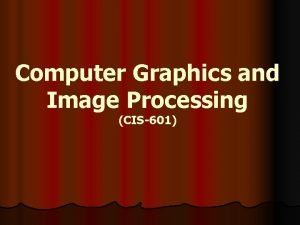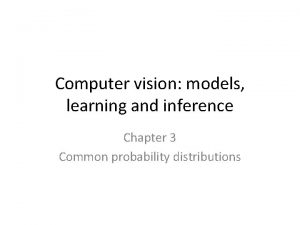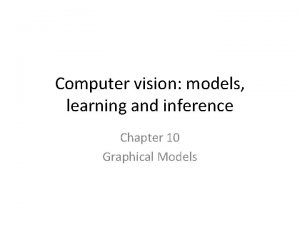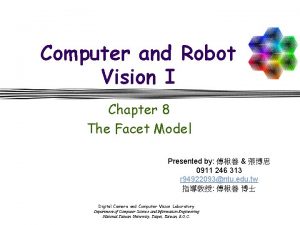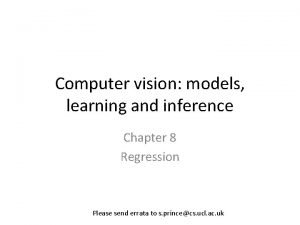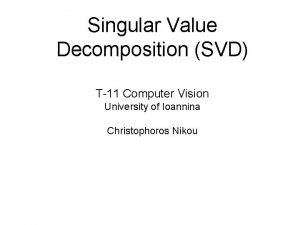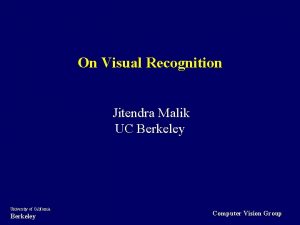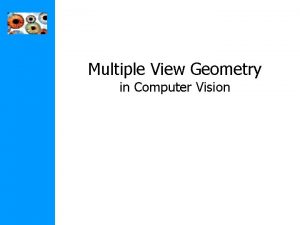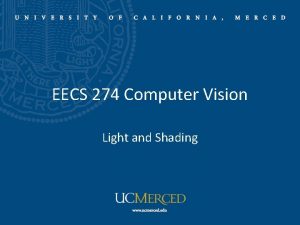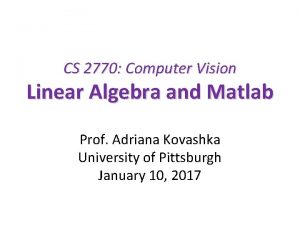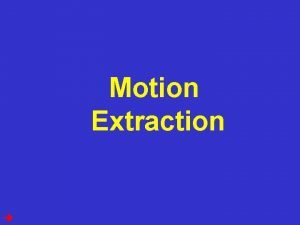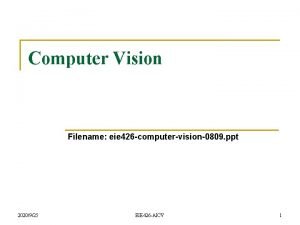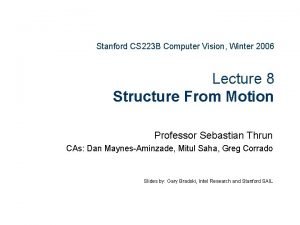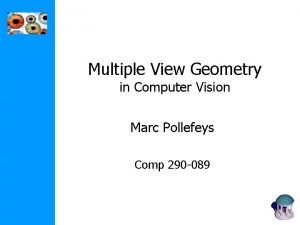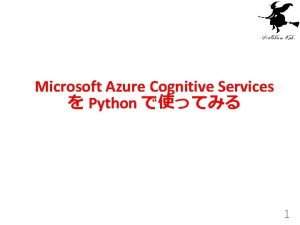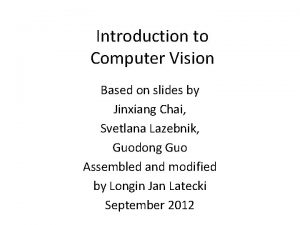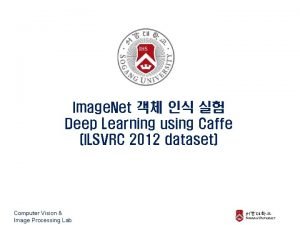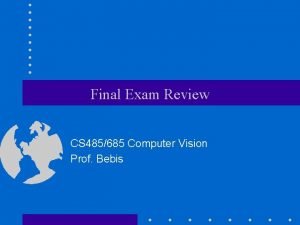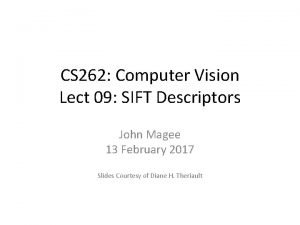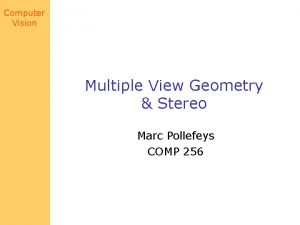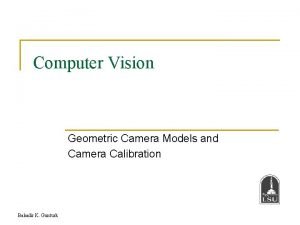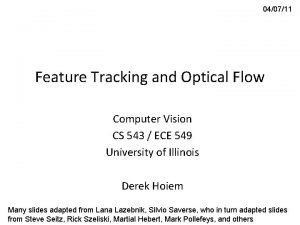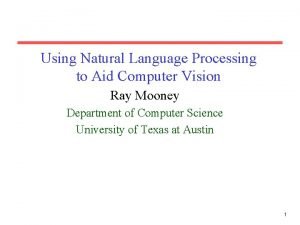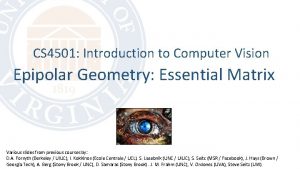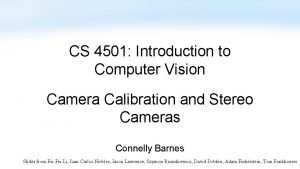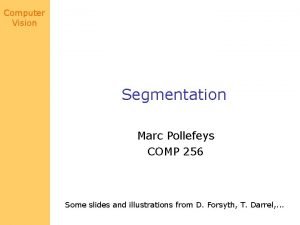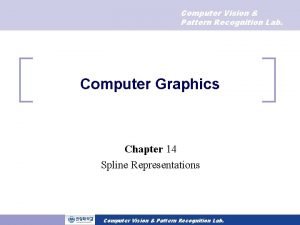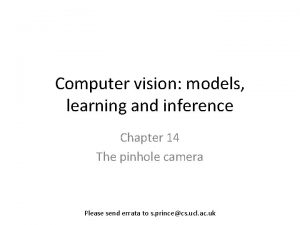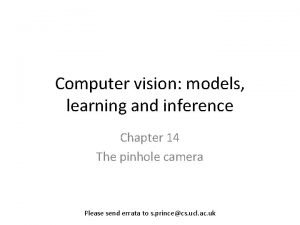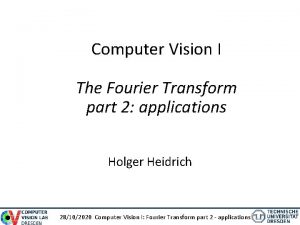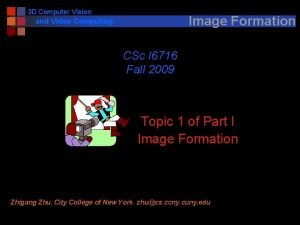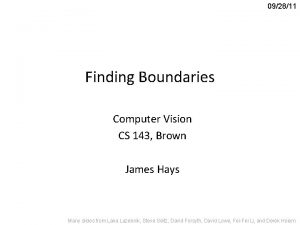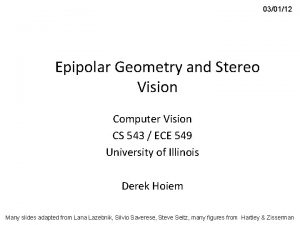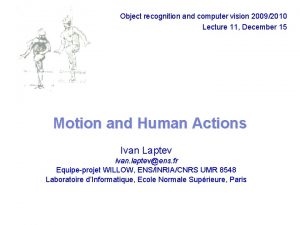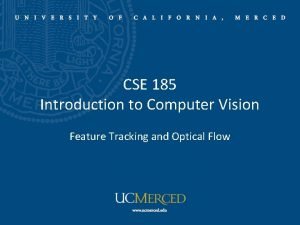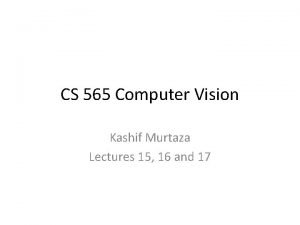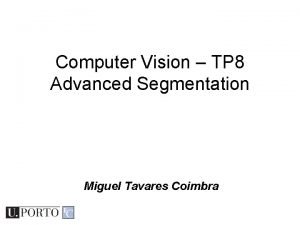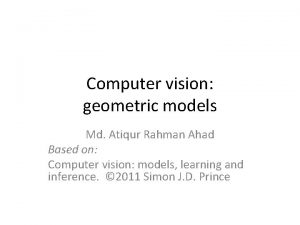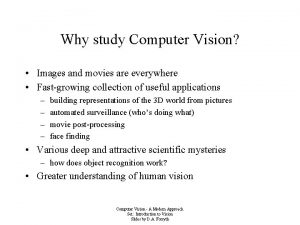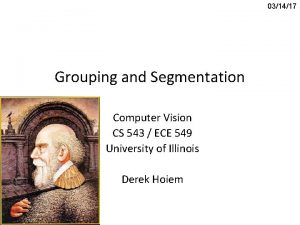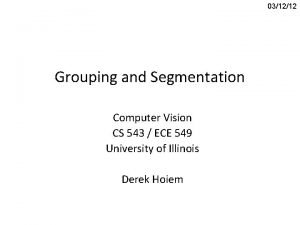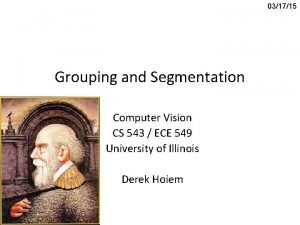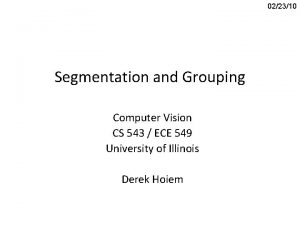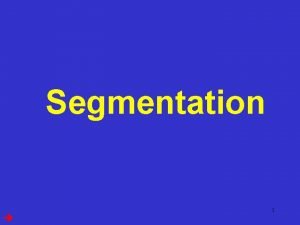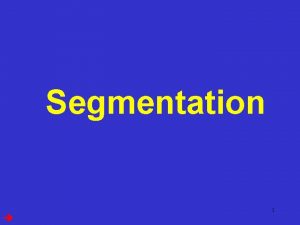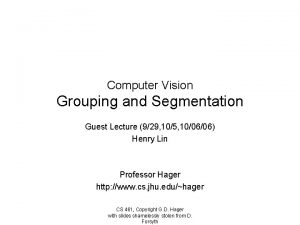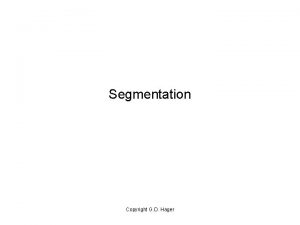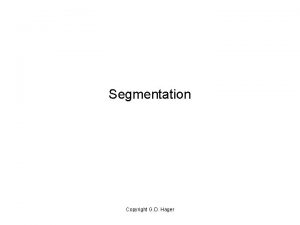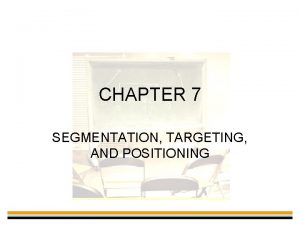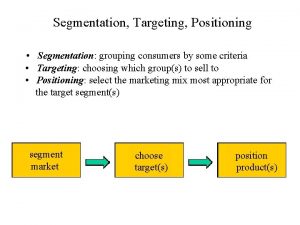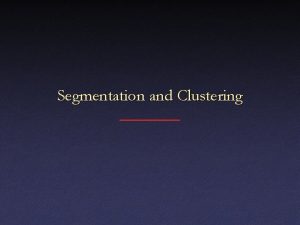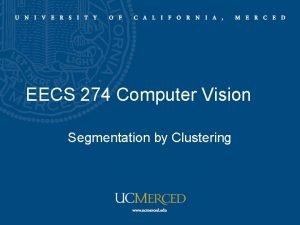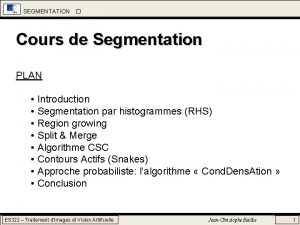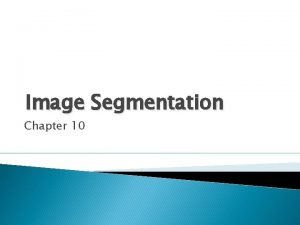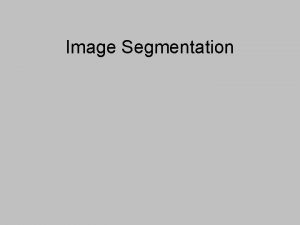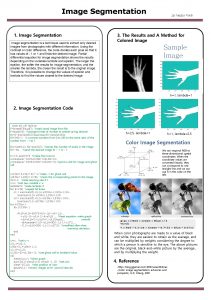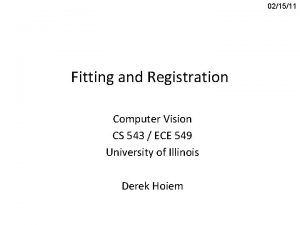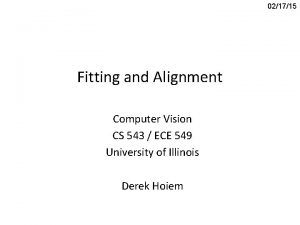031417 Grouping and Segmentation Computer Vision CS 543














![Segmentation for efficiency: “superpixels” [Felzenszwalb and Huttenlocher 2004] [Hoiem et al. 2005, Mori 2005] Segmentation for efficiency: “superpixels” [Felzenszwalb and Huttenlocher 2004] [Hoiem et al. 2005, Mori 2005]](https://slidetodoc.com/presentation_image_h2/9d39a1cc22a4719fefd96d2f19019cad/image-15.jpg)

![Segmentation for object proposals “Selective Search” [Sande, Uijlings et al. ICCV 2011, IJCV 2013] Segmentation for object proposals “Selective Search” [Sande, Uijlings et al. ICCV 2011, IJCV 2013]](https://slidetodoc.com/presentation_image_h2/9d39a1cc22a4719fefd96d2f19019cad/image-17.jpg)










































- Slides: 59

03/14/17 Grouping and Segmentation Computer Vision CS 543 / ECE 549 University of Illinois Derek Hoiem

Today’s class • Segmentation and grouping – Gestalt cues – By clustering (mean-shift) – By boundaries (watershed) • Superpixels and multiple segmentations

Gestalt psychology or gestaltism German: Gestalt - "form" or "whole” Berlin School, early 20 th century Kurt Koffka, Max Wertheimer, and Wolfgang Köhler View of brain: • whole is more than the sum of its parts • holistic • parallel • analog • self-organizing tendencies Slide from S. Saverese

Gestaltism The Muller-Lyer illusion

We perceive the interpretation, not the senses

Principles of perceptual organization From Steve Lehar: The Constructive Aspect of Visual Perception

Principles of perceptual organization

Gestaltists do not believe in coincidence

Emergence

Grouping by invisible completion From Steve Lehar: The Constructive Aspect of Visual Perception

Grouping involves global interpretation From Steve Lehar: The Constructive Aspect of Visual Perception

Grouping involves global interpretation From Steve Lehar: The Constructive Aspect of Visual Perception

Gestalt cues • Good intuition and basic principles for grouping • Basis for many ideas in segmentation and occlusion reasoning • Some (e. g. , symmetry) are difficult to implement in practice

Image segmentation Goal: Group pixels into meaningful or perceptually similar regions
![Segmentation for efficiency superpixels Felzenszwalb and Huttenlocher 2004 Hoiem et al 2005 Mori 2005 Segmentation for efficiency: “superpixels” [Felzenszwalb and Huttenlocher 2004] [Hoiem et al. 2005, Mori 2005]](https://slidetodoc.com/presentation_image_h2/9d39a1cc22a4719fefd96d2f19019cad/image-15.jpg)
Segmentation for efficiency: “superpixels” [Felzenszwalb and Huttenlocher 2004] [Hoiem et al. 2005, Mori 2005] [Shi and Malik 2001]

Segmentation for feature support 50 x 50 Patch
![Segmentation for object proposals Selective Search Sande Uijlings et al ICCV 2011 IJCV 2013 Segmentation for object proposals “Selective Search” [Sande, Uijlings et al. ICCV 2011, IJCV 2013]](https://slidetodoc.com/presentation_image_h2/9d39a1cc22a4719fefd96d2f19019cad/image-17.jpg)
Segmentation for object proposals “Selective Search” [Sande, Uijlings et al. ICCV 2011, IJCV 2013] [Endres Hoiem ECCV 2010, IJCV 2014]

Segmentation as a result Rother et al. 2004

Major processes for segmentation • Bottom-up: group tokens with similar features • Top-down: group tokens that likely belong to the same object [Levin and Weiss 2006]

Segmentation using clustering • Kmeans • Mean-shift

Feature Space Source: K. Grauman

K-means clustering using intensity alone and color alone Image Clusters on intensity Clusters on color

K-Means pros and cons • Pros – Simple and fast – Easy to implement • Cons – Need to choose K – Sensitive to outliers • Usage – Rarely used for pixel segmentation

Mean shift segmentation D. Comaniciu and P. Meer, Mean Shift: A Robust Approach toward Feature Space Analysis, PAMI 2002. • Versatile technique for clustering-based segmentation

Mean shift algorithm • Try to find modes of this non-parametric density

Kernel density estimation Kernel Estimated density Data (1 -D)

Kernel density estimation function Gaussian kernel

Mean shift Region of interest Center of mass Mean Shift vector Slide by Y. Ukrainitz & B. Sarel

Mean shift Region of interest Center of mass Mean Shift vector Slide by Y. Ukrainitz & B. Sarel

Mean shift Region of interest Center of mass Mean Shift vector Slide by Y. Ukrainitz & B. Sarel

Mean shift Region of interest Center of mass Mean Shift vector Slide by Y. Ukrainitz & B. Sarel

Mean shift Region of interest Center of mass Mean Shift vector Slide by Y. Ukrainitz & B. Sarel

Mean shift Region of interest Center of mass Mean Shift vector Slide by Y. Ukrainitz & B. Sarel

Mean shift Region of interest Center of mass Slide by Y. Ukrainitz & B. Sarel

Computing the Mean Shift Simple Mean Shift procedure: • Compute mean shift vector • Translate the Kernel window by m(x) Slide by Y. Ukrainitz & B. Sarel

Real Modality Analysis

Attraction basin • Attraction basin: the region for which all trajectories lead to the same mode • Cluster: all data points in the attraction basin of a mode Slide by Y. Ukrainitz & B. Sarel

Attraction basin

Mean shift clustering • The mean shift algorithm seeks modes of the given set of points 1. Choose kernel and bandwidth 2. For each point: a) b) c) d) Center a window on that point Compute the mean of the data in the search window Center the search window at the new mean location Repeat (b, c) until convergence 3. Assign points that lead to nearby modes to the same cluster

Segmentation by Mean Shift • • • Compute features for each pixel (color, gradients, texture, etc); also store each pixel’s position Set kernel size for features Kf and position Ks Initialize windows at individual pixel locations Perform mean shift for each window until convergence Merge modes that are within width of Kf and Ks

Mean shift segmentation results http: //www. caip. rutgers. edu/~comanici/MSPAMI/ms. Pami. Results. html

http: //www. caip. rutgers. edu/~comanici/MSPAMI/ms. Pami. Results. html

Mean-shift: other issues • Speedups – Binned estimation – replace points within some “bin” by point at center with mass – Fast search of neighbors – e. g. , k-d tree or approximate NN – Update all windows in each iteration (faster convergence) • Other tricks – Use k. NN to determine window sizes adaptively • Lots of theoretical support D. Comaniciu and P. Meer, Mean Shift: A Robust Approach toward Feature Space Analysis, PAMI 2002.

Mean shift pros and cons • Pros – – Good general-purpose segmentation Flexible in number and shape of regions Robust to outliers General mode-finding algorithm (useful for other problems such as finding most common surface normals) • Cons – Have to choose kernel size in advance – Not suitable for high-dimensional features • When to use it – Oversegmentation – Multiple segmentations – Tracking, clustering, filtering applications • D. Comaniciu, V. Ramesh, P. Meer: Real-Time Tracking of Non-Rigid Objects using Mean Shift, Best Paper Award, IEEE Conf. Computer Vision and Pattern Recognition (CVPR'00), Hilton Head Island, South Carolina, Vol. 2, 142 -149, 2000

Mean-shift reading • Nicely written mean-shift explanation (with math) http: //saravananthirumuruganathan. wordpress. com/2010/04/01/introduction-to-mean-shiftalgorithm/ • Includes. m code for mean-shift clustering • Mean-shift paper by Comaniciu and Meer http: //www. caip. rutgers. edu/~comanici/Papers/Ms. Robust. Approach. pdf • Adaptive mean shift in higher dimensions http: //mis. hevra. haifa. ac. il/~ishimshoni/papers/chap 9. pdf

Superpixel algorithms • Goal is to divide the image into a large number of regions, such that each regions lie within object boundaries • Examples – Watershed – Felzenszwalb and Huttenlocher graph-based – Turbopixels – SLIC

Watershed algorithm

Watershed segmentation Image Gradient Watershed boundaries

Meyer’s watershed segmentation 1. Choose local minima as region seeds 2. Add neighbors to priority queue, sorted by value 3. Take top priority pixel from queue 1. If all labeled neighbors have same label, assign that label to pixel 2. Add all non-marked neighbors to queue 4. Repeat step 3 until finished (all remaining pixels in queue are on the boundary) Matlab: seg = watershed(bnd_im) Meyer 1991

Simple trick • Use Gaussian or median filter to reduce number of regions

Watershed usage • Use as a starting point for hierarchical segmentation – Ultrametric contour map (Arbelaez 2006) • Works with any soft boundaries – Pb (w/o non-max suppression) – Canny (w/o non-max suppression) – Etc.

Watershed pros and cons • Pros – Fast (< 1 sec for 512 x 512 image) – Preserves boundaries • Cons – Only as good as the soft boundaries (which may be slow to compute) – Not easy to get variety of regions for multiple segmentations • Usage – Good algorithm for superpixels, hierarchical segmentation

Felzenszwalb and Huttenlocher: Graph. Based Segmentation http: //www. cs. brown. edu/~pff/segment/ + Good for thin regions + Fast + Easy to control coarseness of segmentations + Can include both large and small regions - Often creates regions with strange shapes - Sometimes makes very large errors

Turbo Pixels: Levinstein et al. 2009 http: //www. cs. toronto. edu/~kyros/pubs/09. pami. turbopixels. pdf Tries to preserve boundaries like watershed but to produce more regular regions

SLIC (Achanta et al. PAMI 2012) http: //infoscience. epfl. ch/record/177415/files/Superpixel_PAMI 2011 -2. pdf 1. Initialize cluster centers on pixel grid in steps S - Features: Lab color, x-y position 2. Move centers to position in 3 x 3 window with smallest gradient 3. Compare each pixel to cluster center within 2 S pixel distance and assign to nearest 4. Recompute cluster centers as mean color/position of pixels belonging to each cluster 5. Stop when residual error is small + Fast 0. 36 s for 320 x 240 + Regular superpixels + Superpixels fit boundaries - May miss thin objects - Large number of superpixels

Choices in segmentation algorithms • Oversegmentation – Watershed + Pb my favorite – Felzenszwalb and Huttenlocher 2004 my favorite http: //www. cs. brown. edu/~pff/segment/ – SLIC good recent option – Turbopixels – Mean-shift • Larger regions – – Hierarchical segmentation (e. g. , from Pb) my favorite Normalized cuts Mean-shift Seed + graph cuts (discussed later)

Multiple segmentations • When creating regions for pixel classification or object detection, don’t commit to one partitioning • Strategies: – Hierarchical segmentation • Occlusion boundaries hierarchy: Hoiem et al. IJCV 2011 (uses trained classifier to merge) • Pb+watershed hierarchy: Arbeleaz et al. CVPR 2009 • Selective search: FH + agglomerative clustering – Vary segmentation parameters • E. g. , multiple graph-based segmentations or meanshift segmentations – Region proposals • Propose seed superpixel, try to segment out object that contains it (Endres Hoiem ECCV 2010, Carreira Sminchisescu CVPR 2010)

Things to remember • Gestalt cues and principles of organization • Uses of segmentation – – Efficiency Better features Propose object regions Want the segmented object • Mean-shift segmentation – Good general-purpose segmentation method – Generally useful clustering, tracking technique • Watershed segmentation – Good for hierarchical segmentation – Use in combination with boundary prediction

Next class: EM algorithm • Make sure to bring something to take notes (will include a long derivation)
 Cs766
Cs766 Level 5 health and social care research project examples
Level 5 health and social care research project examples Ece 543
Ece 543 Ocr scanner
Ocr scanner 543 machine
543 machine Ba543
Ba543 Ba 543
Ba 543 Ba 543
Ba 543 Cs 543
Cs 543 Cs 543
Cs 543 Segmentation in computer graphics
Segmentation in computer graphics Computer vision
Computer vision Mathematical foundations of computer graphics and vision
Mathematical foundations of computer graphics and vision Computer vision: models, learning, and inference
Computer vision: models, learning, and inference Computer vision: models, learning, and inference pdf
Computer vision: models, learning, and inference pdf Computer and robot vision
Computer and robot vision Computer vision: models, learning, and inference
Computer vision: models, learning, and inference 16-385 computer vision
16-385 computer vision Kalman filter computer vision
Kalman filter computer vision Svd computer vision
Svd computer vision Berkeley computer vision
Berkeley computer vision Multiple view geometry in computer vision pdf
Multiple view geometry in computer vision pdf Computer vision vs image processing
Computer vision vs image processing Radiometry in computer vision
Radiometry in computer vision Linear algebra for computer vision
Linear algebra for computer vision Impoverished motion examples
Impoverished motion examples Watershed segmentation
Watershed segmentation Cs223 stanford
Cs223 stanford Multiple view geometry in computer vision
Multiple view geometry in computer vision Azure computer vision python
Azure computer vision python Computer vision slides
Computer vision slides Ilsvrc 2012 dataset
Ilsvrc 2012 dataset Computer vision final exam
Computer vision final exam Computer vision sift
Computer vision sift Multi view geometry
Multi view geometry Camera models in computer vision
Camera models in computer vision Aperture problem computer vision
Aperture problem computer vision Computer vision vs nlp
Computer vision vs nlp Epipolar geometry computer vision
Epipolar geometry computer vision Computer vision camera calibration
Computer vision camera calibration Computer vision
Computer vision Decomposition
Decomposition Computer vision
Computer vision Computer vision
Computer vision Computer vision
Computer vision Computer vision
Computer vision Fourier transform in computer vision
Fourier transform in computer vision Image formation computer vision
Image formation computer vision Computer vision brown
Computer vision brown Computer vision brown
Computer vision brown Epipolar geometry computer vision
Epipolar geometry computer vision Computer vision brown
Computer vision brown Szeliski computer vision
Szeliski computer vision Computer vision
Computer vision Aperture problem
Aperture problem Murtaza computer vision
Murtaza computer vision Computer vision
Computer vision Computer vision
Computer vision Computer vision pipeline
Computer vision pipeline Why study computer vision
Why study computer vision


